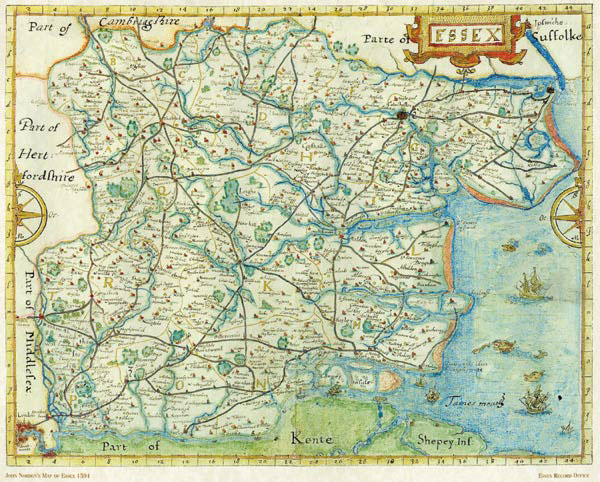Volume 6, Number 1—February 2000
Perspective
From Shakespeare to Defoe: Malaria in England in the Little Ice Age
Figure 6

Figure 6. Map of the county of Essex in 1594. The extensive coastal salt marshes provided high-quality grazing for sheep and cattle but were also a favored habitat for An. atroparvus, a highly effective malaria vector. The disease was a major cause of illness and death in the area until the end of the 18th century. Reproduced by courtesy of Essex Record Office.
1St. Thomas' Hospital (1213), in the Borough of Lambeth, was on the edge of the River Thames, surrounded by tidal marshes. Parliament met in two buildings at a similar site in the Borough of Westminster, directly across the river. Both areas were notoriously malarious. Centuries later, the American Founding Fathers followed British parliamentary procedure in choosing a site for their new nation's capital at the edge of a malarious swamp, later referred to as "A Mud-hole Equal to the Great Serbonian Bog." The Serbonian Bog probably refers to the vast flood plains of the Danube that border northern Serbia and Bulgaria. The Balkan region was the last major stronghold of malaria in Europe. Malaria was finally eliminated there in 1975.